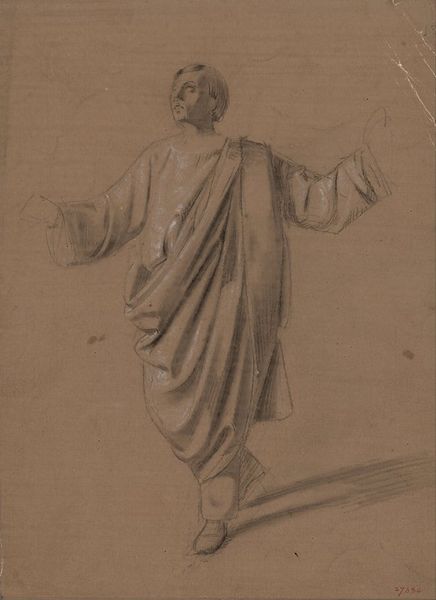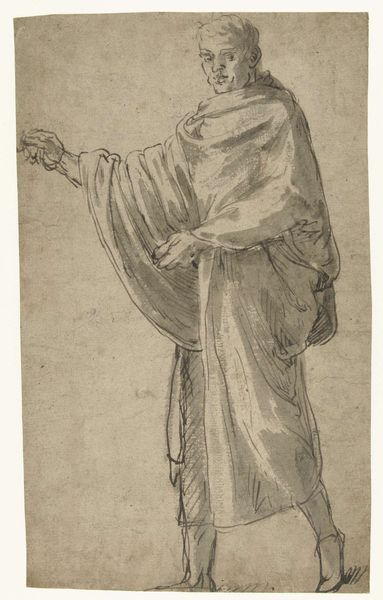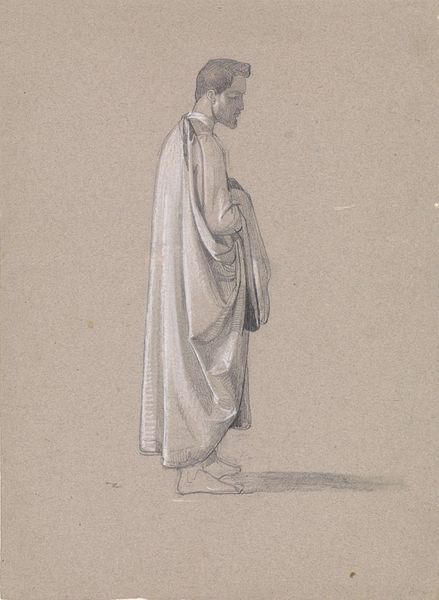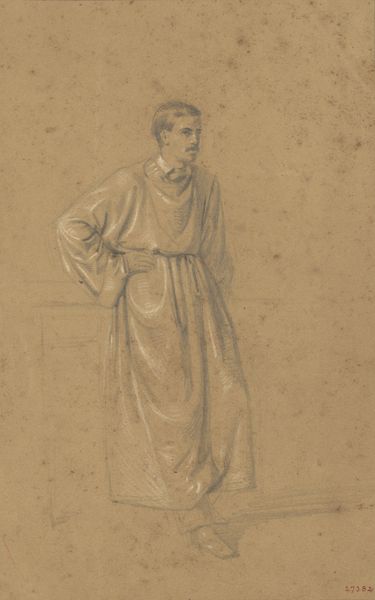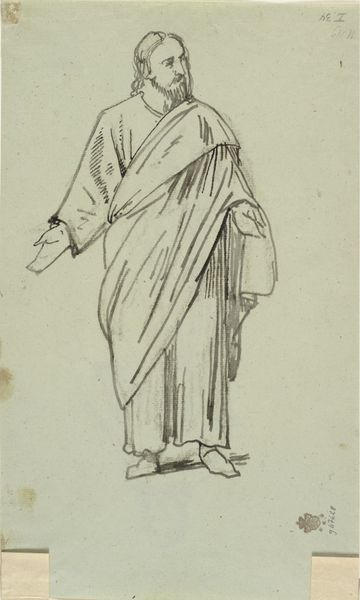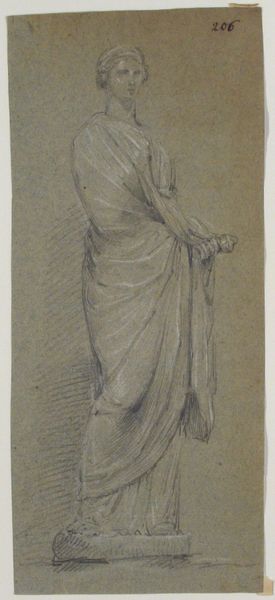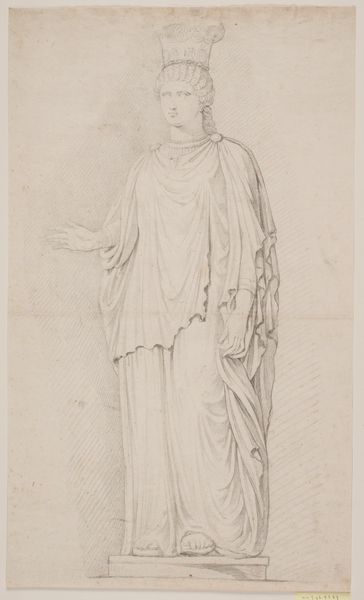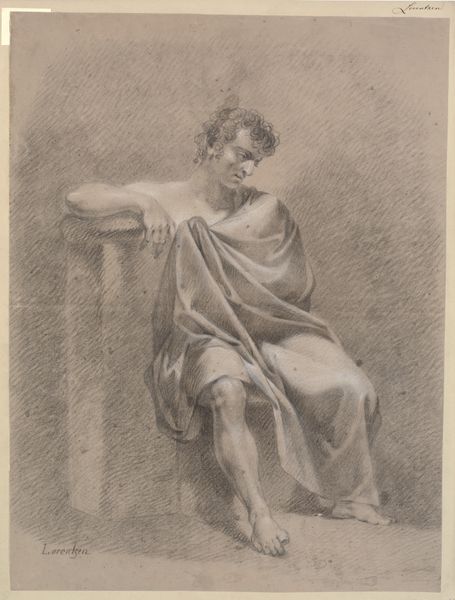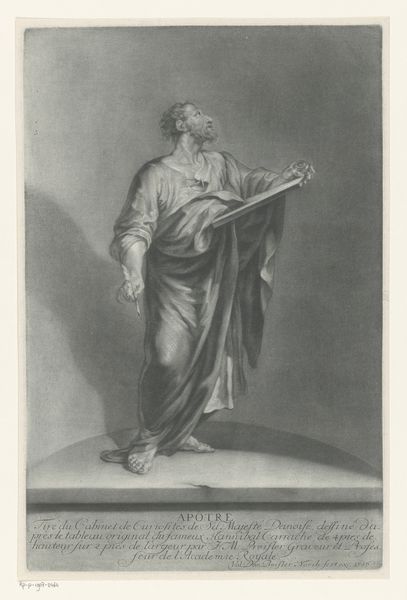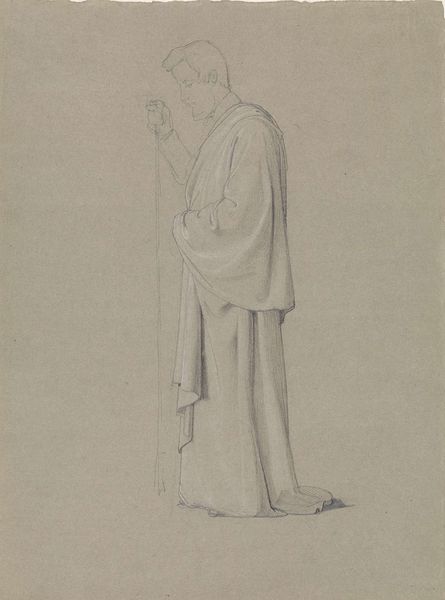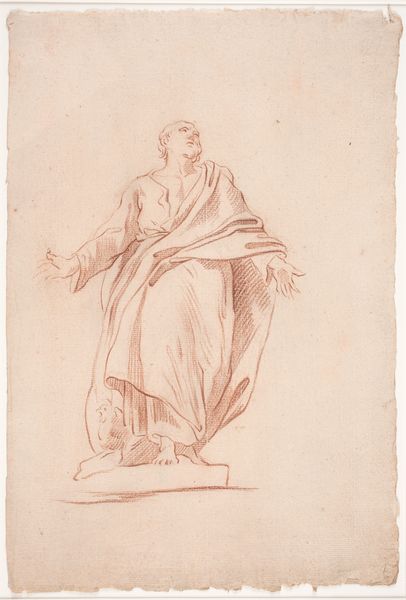
drawing, pencil
#
portrait
#
pencil drawn
#
drawing
#
amateur sketch
#
light pencil work
#
pencil sketch
#
sketched
#
incomplete sketchy
#
study drawing
#
figuration
#
idea generation sketch
#
pencil drawing
#
pencil
#
pencil work
#
academic-art
#
realism
Dimensions: height 281 mm, width 222 mm
Copyright: Rijks Museum: Open Domain
Curator: Here we have Johan Hendrik Koelman’s "Standing Man with Staff, facing left," dating from somewhere between 1830 and 1887. It’s currently held here at the Rijksmuseum. Editor: It gives me a very classical feeling, almost theatrical. There’s a starkness in its simplicity that I find quite compelling, particularly given the relatively small scale and the artist’s reliance on pencil. Curator: Indeed. Note the figure's contrapposto. It is a dynamic yet stable stance. The strategic placement of light and shadow directs the eye. Look at how Koelman uses hatching to model the drapery, providing a sense of depth and volume. The pose reminds one of a Greco-Roman orator or philosopher. Editor: Yes, but within that framework of academic tradition, I also see elements of social commentary, or at least a hint of critique. The staff, while a traditional symbol of authority, appears almost flimsy here. This man, despite his garb, doesn’t quite embody power. I am struck by the bare feet – perhaps signifying vulnerability, a connection to the earth, or a statement about class? Curator: It’s true that the sketch feels more like an initial exploration of form rather than a finished pronouncement, doesn’t it? Perhaps we are seeing the artist experimenting with representations of masculinity or societal roles. His gaze off-page is critical. It leaves space for narrative interpretation. Editor: Precisely. We are invited to complete the narrative. Is he observing or directing? Is he challenging the established order, or merely an actor on a stage directed by unseen powers? The open-ended nature allows viewers to project their own understanding of societal structures. This reading, while speculative, invites contemporary audiences to explore intersections between historical art practices and present-day social justice movements. Curator: A fruitful interpretation. For me, this sketch offers insight into Koelman's technical process and a window onto 19th century artistic training and interests. Editor: I agree, and more broadly, it allows us to see art history as actively relevant to modern discourse on power and identity.
Comments
No comments
Be the first to comment and join the conversation on the ultimate creative platform.
